The Importance of Product Feedback: Best Practices, Tools
- Published:
- Updated: July 2, 2024


Understanding product fit is critical to success. Product managers are often tasked with allocating resources to understanding customer sentiment through gathering qualitative product feedback.
Product feedback can take many forms – from user interviews, session recordings, in-app surveys, and more.
In this article, we’ll explore the concept of product feedback and its importance in crafting products that resonate with customers and end-users.
What Is Product Feedback?
Product feedback includes insights, opinions, ideas, or criticisms about your product. Product feedback allows your users, customers, and prospects to share what they like about your product and what they don’t.
Product feedback is typically collected through surveys and interviews, but feedback can also come in the form of third-party review sites, conversations with support teams, reviews, and social media. When collecting your product feedback, you want to be sure you’re gathering insights from various spaces (we’ll dig deeper into how and where you can do this in a moment).
Collecting and reviewing product feedback should be an ongoing endeavor, but there are certain times when it’s more important than others to take feedback into account. For example, suppose you’re rolling out a new product or plan to make significant changes to an existing product. In that case, you can increase your chances of successfully building something if you involve customers and end users.
The Importance of Gathering Product Feedback
Gathering product feedback enables you to make better decisions about how to create, brand, and market your product. With the help of product feedback, you can:
- Improve your user experience by incorporating changes and updates that align with your customer needs and expectations.
- Save time and money by focusing on creating features or product updates that your users want.
- Increase team productivity by reducing the number of errors or mistakes made when introducing new product changes or features.
- Prioritize features and product launches to meet your users’ biggest and most important demands.
- Better understand how your product compares to the competition to make appropriate strategic decisions.
- Refine your marketing and sales strategies and messaging to better align with prospects’ needs and desires.
Solicited vs. Unsolicited Product Feedback
When product feedback comes to mind, you most likely envision directly asking your users how they enjoy your product through a survey or interview. And while this is a great way to gather insights, it’s just one of the many ways you can collect feedback.
Product feedback can be considered solicited or unsolicited.
Solicited feedback includes any insight gathered from talking with your customers directly. Unsolicited feedback includes feedback from third-party platforms, review sites, or other locations where the users have decided to share their opinions without prompting.
We’ll dive into the different types of feedback a little later on. Still, it’s essential to understand why solicited, and unsolicited product feedback is crucial for gathering a holistic view of your product’s perception.
- Solicited feedback. Solicited feedback allows you to ask specific product feedback survey questions from your users to get more detailed information on your product. Solicited feedback typically happens through surveys, user interviews, focus groups, and more.
- Unsolicited feedback. Unsolicited feedback has the potential to be more honest in its criticisms than solicited feedback because users are making their opinions known without expecting the company to read them. However, unsolicited feedback requires users to take the initiative to post their thoughts or ideas.
Types of Product Feedback
Here are the most common product feedback types, including solicited and unsolicited feedback:
1. Customer feedback surveys
Customer feedback surveys are sent out to users to get insight into specific features, tools, or product elements. These surveys can be sent through email, embedded into the platform, or distributed during focus groups or interviews.

Surveys allow you to get answers to specific questions rather than just general insight or advice. Surveys are also easy and quick for users to complete, incentivizing them to provide feedback when you ask.
2. Customer interviews and focus groups
An interview or focus group is a more intensive way to collect product feedback while controlling the narrative. During an interview or focus group, your users would engage with a product or feature and provide detailed (often verbal) feedback.
Because you’re speaking face-to-face (or digitally) with your user, you can dive deeper into feedback to get clarification or ask users to expand on their initial opinions. Customer interviews and focus groups create opportunities to ask follow-up questions that can be difficult to do in surveys.
3. Product analytics
Product analytics tracks how users engage with a product and provide feedback in the form of data. With product analytics, you can see how long users spend with your product, what features they engage with, and how often they use it.
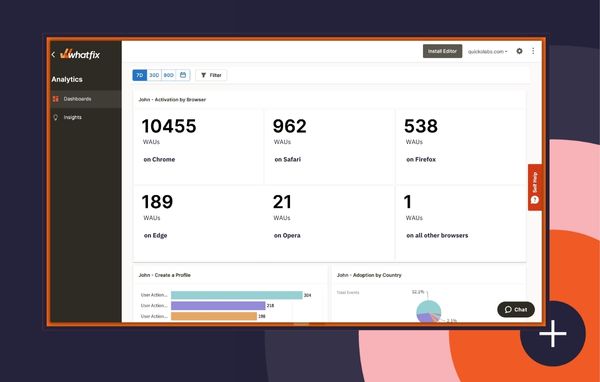
Analytics can be an excellent tool for supplementing surveys or interviews because it adds numerical data to what customers share. However, analytics requires you to make certain assumptions about what the data tells you. Hence, it’s always essential to back up your hypotheses with additional feedback forms.
With a tool like Whatfix, product teams are empowered to create and analyze in-app experiences to gather analytic-based feedback into how well their features and flows are being adoption – and where friction points are occuring.
4. Online communities and forums
Online communities and forums are a type of unsolicited feedback where users can share their opinions on a product anonymously with a community of other users. Many users turn to online communities and forums to get advice on how to get the most from a product or to ask for help solving a problem.
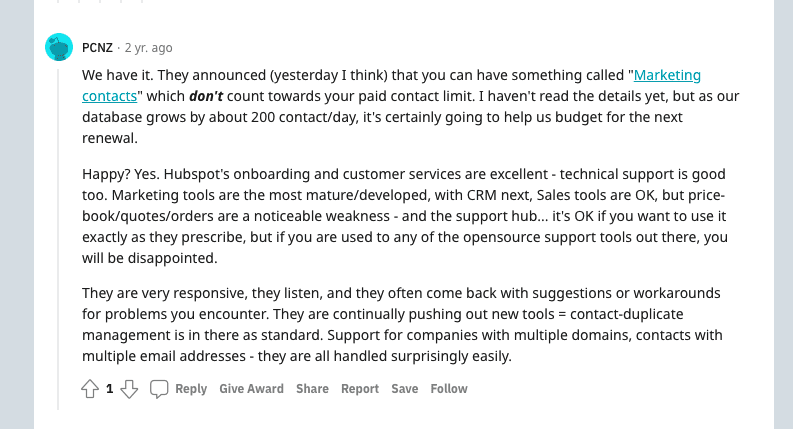
Online communities and forums are a great way to get unfiltered feedback from your users — especially negative feedback. You can see what users find frustrating, where they’re struggling to use your product, and more.
5. Support issues
The questions or concerns that your users come to your support team to answer can give you tons of insight into the areas they’re struggling with or where product expectations aren’t being met. Keeping track of the types of support issues your users experience and what common questions come up can show you where you need to build up your resources.
Track your support tickets and regularly check in with your team to discuss the issues or requests your users are providing. The frequency of questions or concerns can help you prioritize product updates to better meet customer needs.
6. Social media
Social media is another excellent source for unsolicited feedback. Many users will turn to social media to voice frustrations, praise products, or provide recommendations to their communities. Getting involved in the conversation or even tracking what people say can let you know what users think of your product.
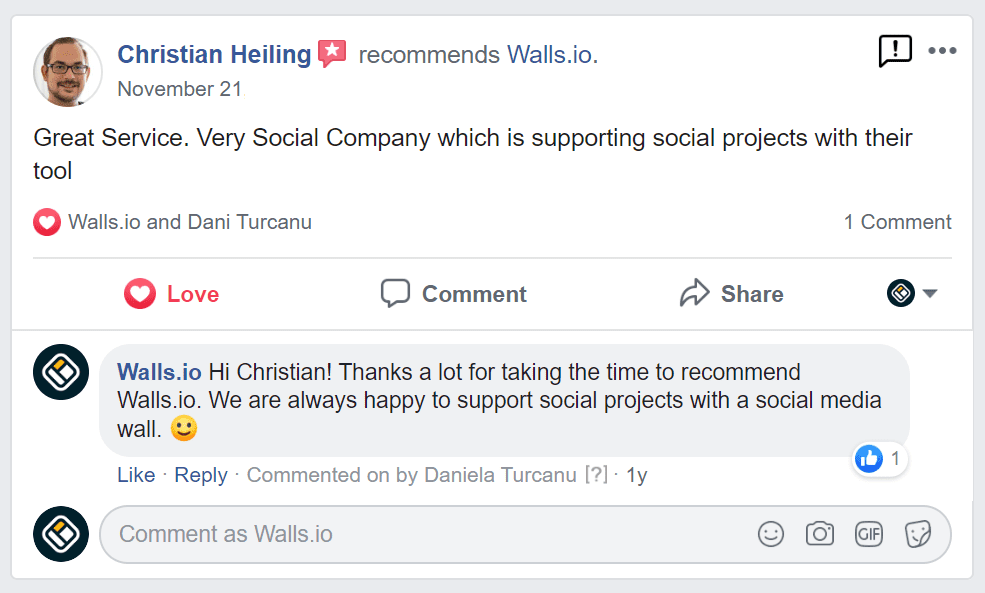
Set alerts to get notifications when someone mentions your brand or product on a social media platform. Look for opportunities to thank users for sharing success stories or provide support to users who might be struggling to get the most out of your product.
7. Review sites
Review sites like G2, Capterra, or other third-party pages are a go-to source for many users considering buying a new product, and it’s an excellent resource for companies looking to improve their product strategy. The nature of review sites encourages users to share both the pros and the cons, so you can get a holistic view of what people think.
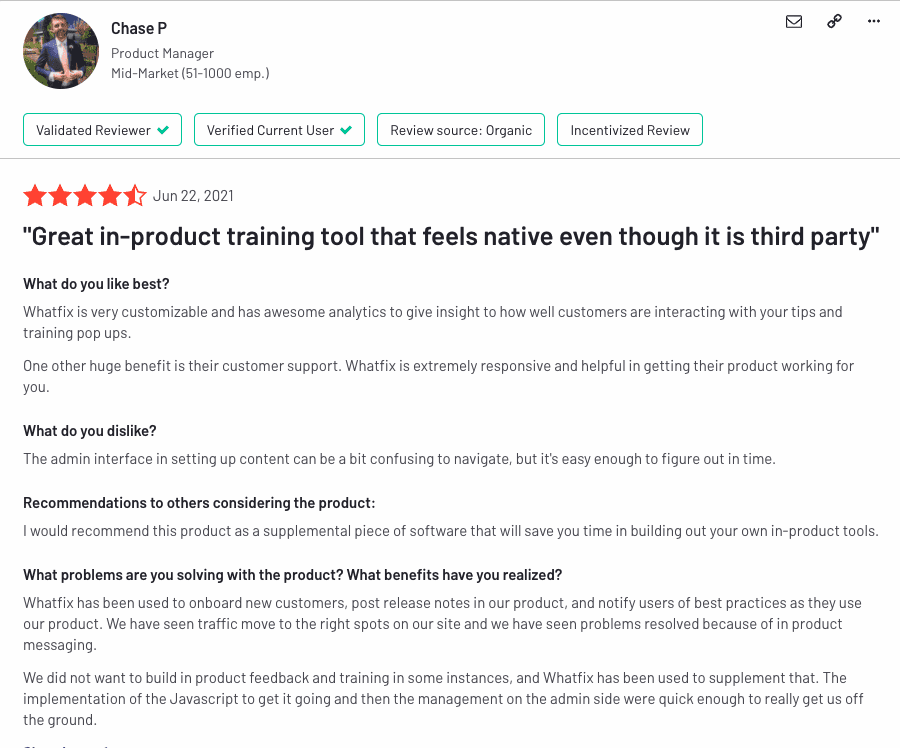
Keep an eye on review pages for new submissions and compile frequently discussed features or components into a list. Not everything mentioned in a review site will be useful, but it’s a great way to gather unsolicited and authentic feedback.
The Product Feedback Loop
Aftering collecting your product feedback, you need to make the most of it. It’s great to know what people say, but if you’re not using that feedback to make strategic updates and changes to your product, you’re missing a real opportunity.
The product feedback loop starts with collecting feedback, assessing it to determine its relevance, and implementing action items to address issues or concerns.
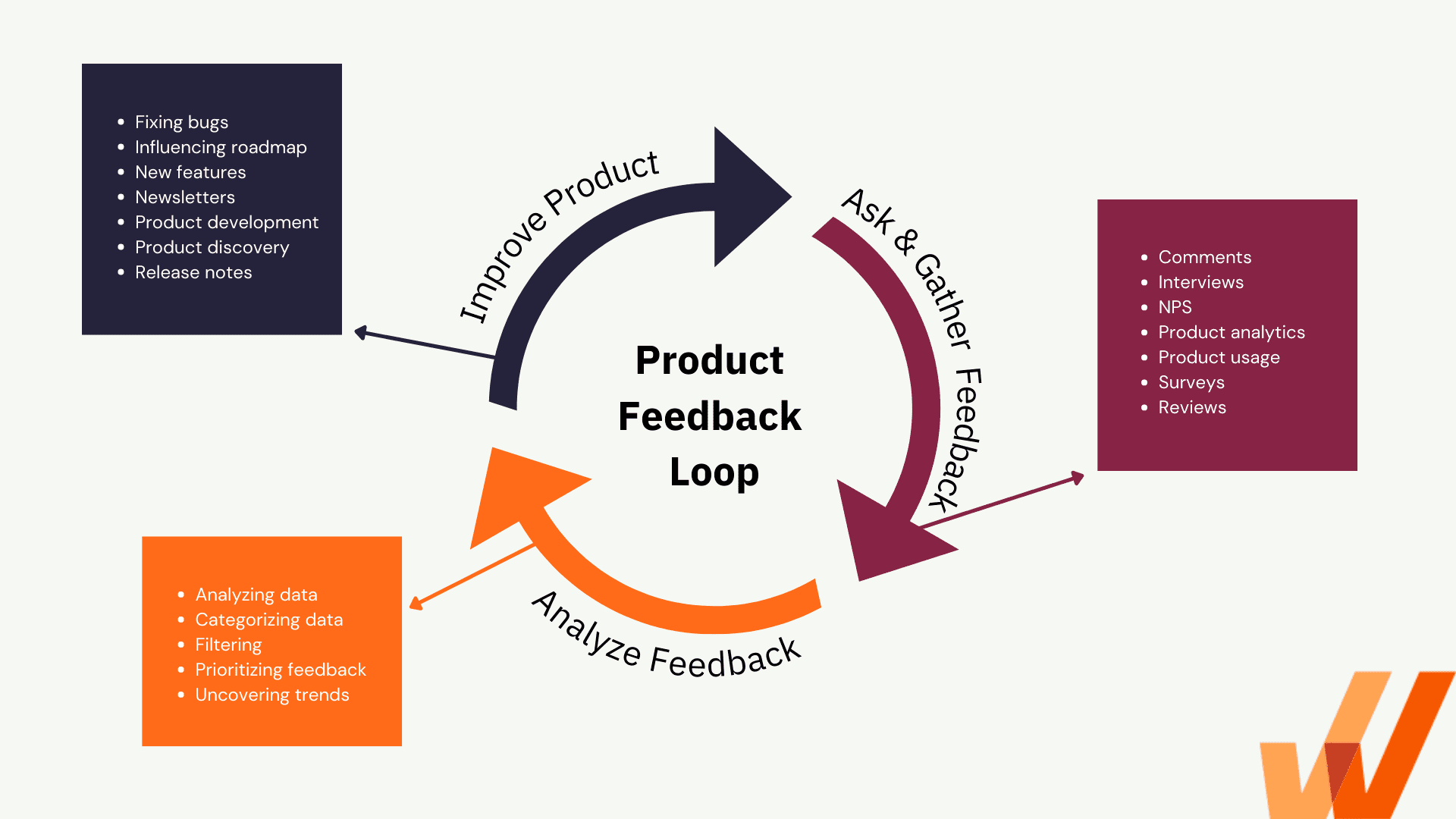

Collect in-app feedback with native surveys, create contextual user onboarding experiences, drive feature adoption, and provide self-help support with Whatfix
Whatfix is a digital adoption platform that enables product managers with a no-code platform to create and launch in-app feedback surveys, product tours, user onboarding checklists, interactive flows, announcements, hotspots, tooltips, self-help wikis, and more – all without engineering dependencies. Analyze your product usage to identify friction areas, understand engagement, and build user cohorts.
How to Collect Great Product Feedback
Here’s how you can start collecting excellent product feedback and build a product feedback loop.
1. Set feedback goals and objectives
Collecting product feedback shouldn’t be a passive endeavor. You first need to set your goals and objectives to achieve results from your product feedback loop.
It’s impossible to take every individual user’s feedback into account. Instead, you need to identify the most common problems or essential features to add. To do this, you need an appropriate sample size of feedback to work from.
Identify how much feedback you want to collect, who you want to collect it from, and how.
2. Ask the right questions
When soliciting feedback, asking the right questions is essential to get the necessary information. Identify what those questions are and what you’re hoping to learn from each question you ask.
General questions like how the user enjoys the product are a great place to start. But if you’re looking for more specific information about how they use the product, what features they engage with, or what they’re hoping to see from future product updates, you’ll want to ask questions encouraging them to share.
Use a healthy mix of open-ended, multiple choice, or ranking questions. Keeping surveys simple and easy to complete can increase the chances of users responding, but providing opportunities to expand or elaborate on their thoughts can give you more detailed info.
3. Use various feedback channels and methods
Mix up the channels and methods you’re using to collect feedback. Surveys are a great way to start, but you’ll also want to look at social media, forums, and other sites to get a more holistic view of all your different users’ opinions.
Understand why users go to different channels to provide feedback. For example, users have an unconscious bias to leave positive feedback when they’re giving feedback in a medium controlled by the product team they’re reviewing (ie. in an NPS survey or customer interview). They might provide more honest, critical feedback on third-party mediums such as review sites or social media.
4. Allow feedback to happen organically
Nudging users to provide feedback is helpful at times, but organic feedback is more likely to be authentic. When users have the opportunity to provide feedback when they’re ready, you get better insights and more detailed opinions.
It’s okay to set up a plan to encourage users to share feedback, but create pathways that allow users to communicate when they’re ready. Unless you’re looking for feedback on something specific, leave the door open for conversation.
An excellent hybrid route allows users to leave feedback directly inside your application. With a digital adoption platform like Whatfix, product teams are empowered to build and analyze in-app experiences – and then nudge users to provide feedback to that in-app guidance or experience in real-time, with embedded feedback forms.
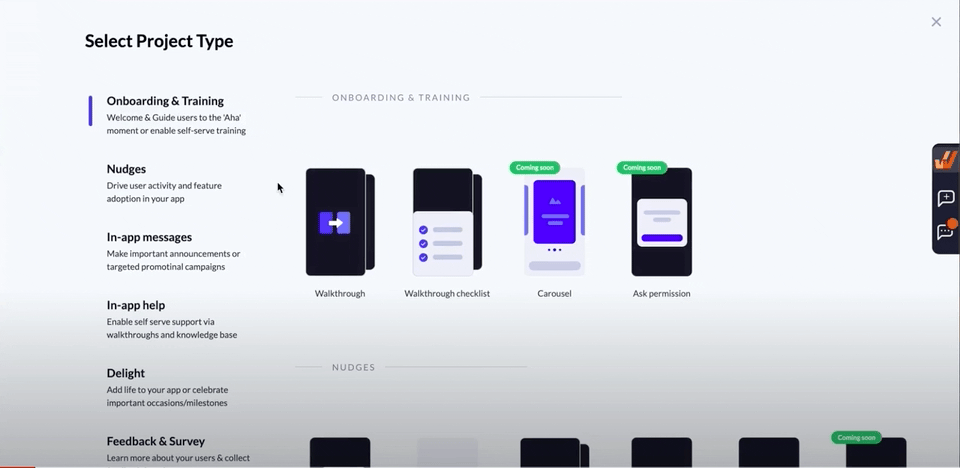
5. Turn feedback into action items
Don’t let the collected feedback sit and gather dust. You need to take the feedback users have given you and turn it into action items on how you can change or improve your product.
Creating a product roadmap page that outlines all your future updates and plans can show users that their feedback has been taken into consideration and you plan to implement changes to address those issues soon.
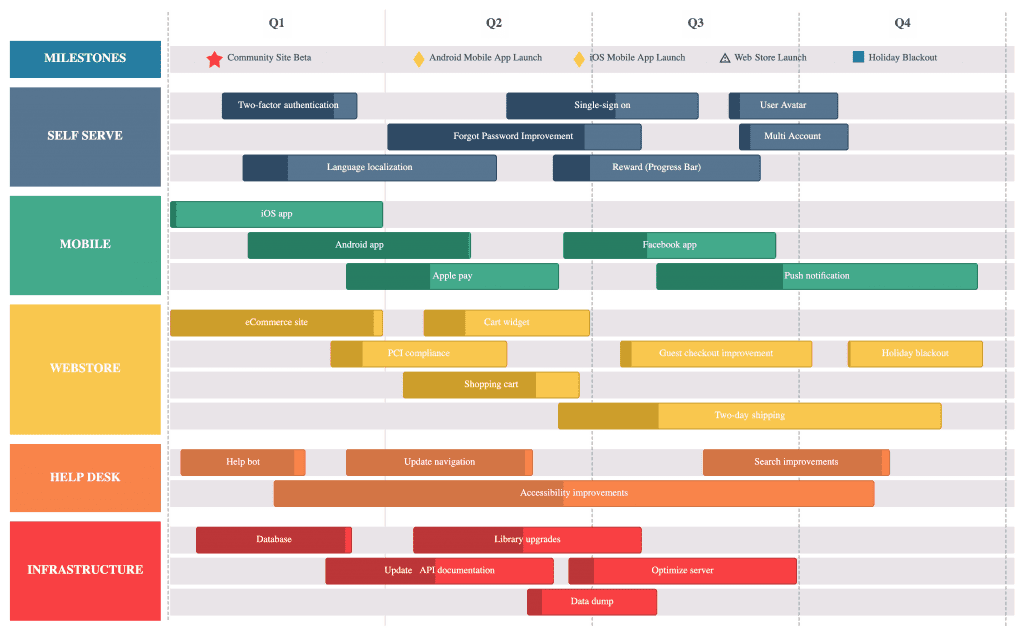

5 Best Product Feedback Software in 2022
There are many types of tools to help product teams collect and analyze user feedback. Here are the best product feedback software tools in 2022:
1. Whatfix
- Software type: Digital adoption platform
- G2 review rating: 4.7 out of 5 stars
Whatfix is a digital adoption platform (DAP) that provides product teams with the tools to create step-by-step guidance within applications and analyze user behavior with in-depth user behavioral and guided analytics. Whatfix simplifies user adoption and monitoring to gather product adoption metrics as a no-code product adoption and feedback tool.
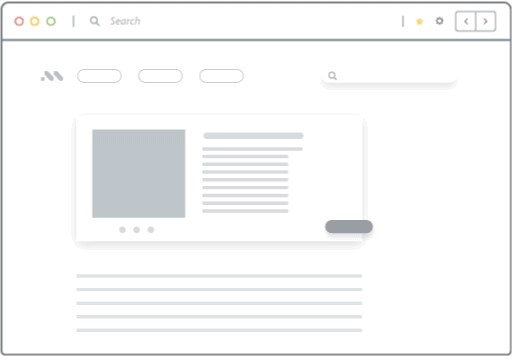

Whatfix empowers product teams with no-code tools to create in-app knowledge bases, smart tips, walkthroughs, and more – all creating an experience for your user that can be monitoring and analyzed through analytics.



Whatfix makes it easy to identify optimization opportunities so you can refine your product to better align with your users’ needs. And because it’s an all-in-one digital adoption tool, you can use the same system to educate users on how to get the most from your product, keeping all your data and information in one place.


2. Mopinion
- Software type: User feedback tool
- G2 review rating: 4.1 out of 5 stars
Mopinion is an all-in-one user feedback tool that provides data and the story behind it. Mopinion helps you get an outside perspective of your users’ online journey so you can adjust your website, app, or product to meet their needs and expectations.


Mopinion provides expert-designed forms and surveys to connect with and capture information from your users or prospects at various touchpoints. It provides real-time insights that are easy to share with your team so you can quickly collaborate to make the best decisions for your product strategy.


3. Intercom
- Software type: Customer engagement and live chat tool
- G2 review rating: 4.4 out of 5 stars
Intercom is a live chat and engagement operating system that covers everything from conversion to support. It’s designed to keep your users active and engaged as they move through the customer journey, providing them with everything from campaigns to surveys.


Intercom is an all-in-one tool for sales, marketing, and support teams to keep all your most important customer information and data in one tool. In addition to built-in surveys, you can provide proactive support to address customer challenges or potential problems before they happen.


4. Pendo
- Software type: Product experience tool
- G2 review rating: 4.6 out of 5 stars
Pendo is a product experience platform that replaces many different tools within your tech stack. As a product feedback tool, you can use Pendo to find out what features or additions your customers want most to prioritize appropriately.


Pendo makes it easy to collect requests at scale and organize your feedback by feature, customer type, or user cohort. With Pendo, you can easily reference, understand, and adjust to meet your customer needs depending on how they engage with your product.


5. Instabug
- Software type: Mobile app performance monitor
- G2 review rating: 4.3 out of 5 stars
Instabug monitors, prioritizes, and debugs performance and stability issues for your app. Keep an eye on app performance by monitoring key metrics, understand the problems behind app crashes to effectively solve them, and receive bug reports directly from users.


Instabug shares more than just crash data to get a more holistic view of how your users engage with your app. You can stay proactive about poor UI, slow loading pages, or other app issues so you can solve them before your customers start complaining.
Customers want to feel like they’re using products designed with them in mind — not that they’re expected to adjust to whatever they’ve been given. But when you’re guessing at what your customers want, you risk wasting time and resources producing something they don’t need.
Prioritizing product feedback brings your customers into the conversation, giving them a voice and opinion on the future of your product. They can feel more invested in the product you’re creating, and your team can focus on making meaningful updates and changes that will resonate with your audience.
With Whatfix, discover key user insights and build a data-drive product and adoption strategy. Learn more about Whatfix Analytics and its user feedback capabilities now.
Thank you for subscribing!



